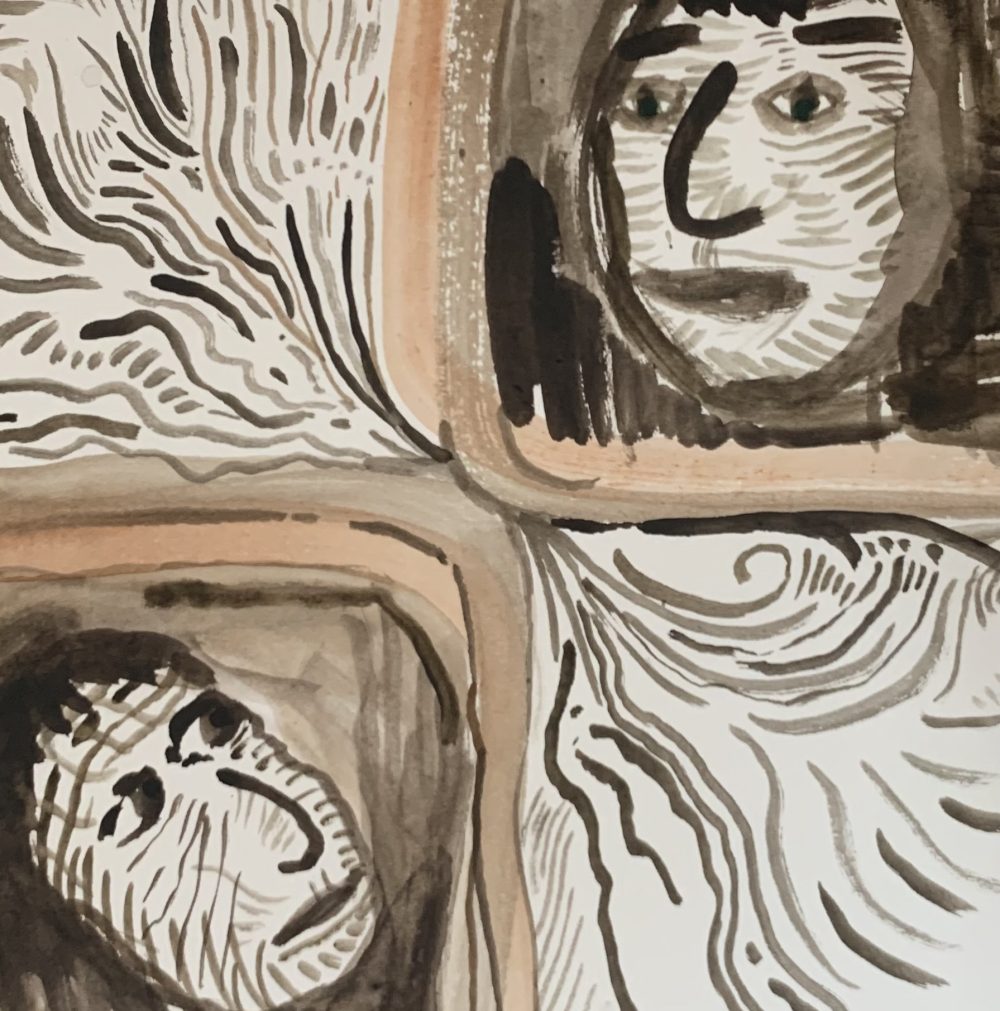I am writing short stories. I am on number six, with a goal of ten. And sometimes I need a break, so I decided to start a weekly blog post about intertextuality, more broadly inter-art. Most of my stories so far refer to other books; for example in my long Fez story the young protagonist is in love with Catherine Barkley of Hemingway’s Farewell to Arms and in “Elephant Man Comes Out,” the protagonist is aroused (again) by Edmund White’s A Boy’s Own Story. I am often captivated by poems, stories, and novels that refer to other poems, narratives, paintings, pieces of art, songs, movies, and symphonies because art is such an important part of my own life. Following the threads of influence and provenance is a mysterious process, revealing layer upon layer of literary and artistic sediment/sentiment. I am also reading Big Magic by Elizabeth Gilbert and feeling the rightness of just writing and not necessarily getting it right. Blogging is good practice. A way of priming the pump for the stories.
So each week (or more often, or less often), I will blog about inter-art. I will either discuss something I have come across in my writing, or I will open books randomly to find something (a favourite pastime of mine). I’d like to start, though, with one of my favourite short stories and the poem referred to and, in fact, quoted in its entirety, in that story. Ann Beattie is an American novelist and short story writer (68 years old), and her “Yancey” is a story about an ageing woman and her ageing dog (whose name is Yancey). In the first person, this woman (a poet), describes an intriguing encounter with the IRS man who comes to make sure she does have a home office dedicated to writing that she has claimed in her tax return. After he looks at the room and they exchange some playful dialogue, he says to her “If you were to recommend one book of poetry I should read, what would it be?” We don’t expect an IRS man–a numbers and rules man–to be interested in poetry. They discuss poems, the narrator probing his tastes, and finally she settles on James Wright’s “Lying in a Hammock at William Duffy’s Farm in Pine Island, Minnesota.”
A deceptive poem, a lovely poem, a shocking poem. The bronze butterfly and cowbells, the sunlight, the chicken hawk, the horse droppings all mused upon as the speaker lies in a hammock on a friend’s farm. Then the last line: “I have wasted my life.” When the narrator recites the poem to the IRS guy, he is incredulous. “Is that really a poem?” He asks. And “I’ve never heard anything like that. The last line comes out of nowhere.” And the narrator, who is, remember, a poet, disagrees. She responds that the last line could have come first, but the writer sets us up, seduces us. And they both end up agreeing that everybody feels like that–that they’ve wasted their life–at least some of the time. Their brief encounter, the old poet reciting Wright’s startling poem as she sits on the stairs, her dog next to her, the IRS man listening patiently: it is all so unusual and so unlikely. And yet it is the stuff that happens in our lives, those random coming togethers with strangers or near strangers. Those almost magical encounters. The IRS guy leaves, saying he’ll get a book of Wright’s poetry and she responds “Any day’s good when you get someone to buy a book of poetry who wouldn’t ordinarily do it.”
Reading “Yancey” several times made me recognize how the meeting of two unlikely people can create the heart of a narrative. What do they exchange? How are they transformed by the exchange? I hope that I do some of that work in “Elephant Man” and even in “Family Life,” though in that story it’s an exchange between a son and his mother. More next week.
Madeline

The blog is live! I read your article some long time ago when I creeped it from a page. Madeline your photo is beautiful. You look gorgeous…just as I would suspect…Judy too. xoxo
LikeLike